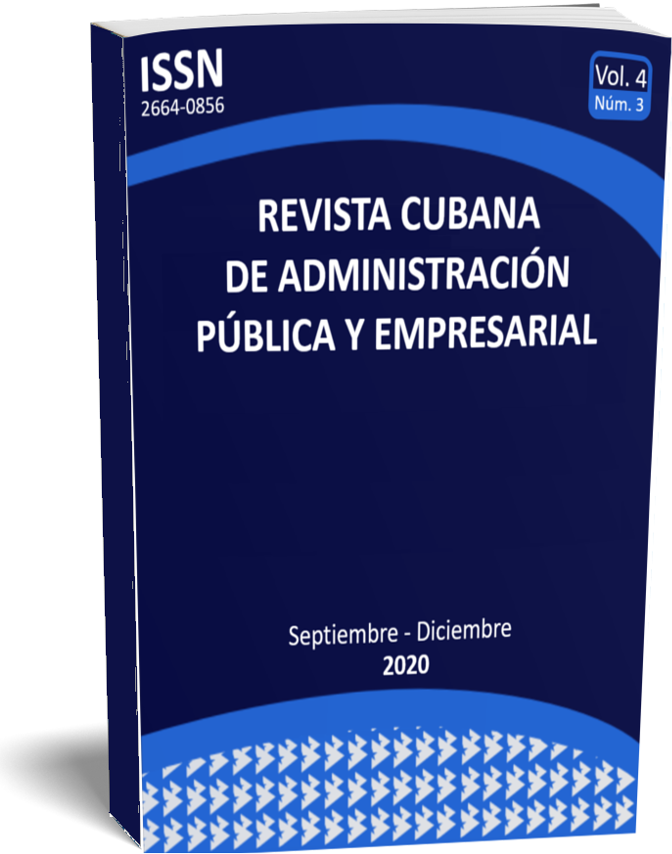Caracterización de la carpeta de patentes del centro de inmunología molecular y su estrategia de extensión para cuatro de sus productos
Palabras clave:
patentes, biotecnología, extensión, cáncer, invenciónResumen
Las patentes son uno de los activos más importantes de las empresas biotecnológicas. El objetivo de este trabajo es realizar una caracterización de la carpeta de patentes del Centro de Inmunología Molecular, así como la estrategia desarrollada para extender la vida de las patentes de sus productos innovadores que se encuentran en comercialización y de dos en evaluación clínica. La información se obtuvo a partir de la Base de Datos de Patentes del Centro de Inmunología Molecular y fue procesada en Excel 2016. Las invenciones se clasificaron en distintas categorías y se hizo un análisis del tiempo de desarrollo de los productos evaluados. Se comprobó que el Centro de Inmunología Molecular tiene una carpeta de patentes que responde a su misión y realiza una gestión pro-activa de la misma. Se debe reforzar la gestión de la extensión de la vida de las patentes de los productos en evaluación clínica estudiados.
Descargas
Citas
Mateos A, López-Moya JR, Ramos P. Key Points in biotechnological patents to be exploited. Recent Patents on Biotechnology 2013;7:84-97.
Larrimore L. Who reads patents? Nature Biotechnology 2017;35(5): 421-424.
Patent development and filing in Brazil: application of value stream mapping to optimize the patent generating process of a company. Journal of Intellectual Property Rights 2016;21:226-237.
Deshpande N, Nagendra A. Patents as collateral for securitization. Nat Biotechnol 2017;35(6):514-516.
Smith JA, Arshad Z, Thomas H, Carr AJ, Brindley DA. Evidence of insufficient quality of reporting in patent landscapes in the life sciences. Nature Biotechnology 2017;35(3): 210-214.
Saha CN, Bhattacharya S. Intellectual property rights: An overview and implications in pharmaceutical industry. J. Adv. Pharm. Tech. Res 2011;2(2): 88-93.
Kordal R, Cahoy D, Minkabo S, Sherer E. Discovery Process – R&D Lead Time Needed for Innovation. Technology Transfer and Entrepreneurship 2016;3(1):32-39.
Lahrtz F. How to success fully patent therapeutic antibodies. J Biom Screen. 2015;20:484–491.
Godar M, de Haard H, Blanchetot Ch, Rasser J. Therapeutic bispecific antibody formats: a patent applications review (1994-2017). Expert Opinion on Therapeutic Patents [Internet] 2018; [Consultado 19 de febrero de 2020]; Disponible en: https://doi.org/10.1080/13543776.2018.1428307
Storz U. Of patents and patent disputes: The TNFα patent files. Part 1: Humira. Human Antibodies 2017; 25(1-2):1–16.
Smith, R. Repositioned drugs: integrating intellectual property and regulatory strategies. Drug Discovery Today: Therapeutic Strategies 2011;8(3–4):131-137.
Dubey R, Dubey J. Pharmaceutical product differentiation: a strategy for strengthening product pipeline and life cycle management. J Med Mark Device Diagn Pharm Mark 2009;9(2):104-18.
Gaudry, K. Evergreening: a common practice to protect new drugs. Nat Biotechnol 2011;29(10):876-878.
Kumar, A. Patent cliff mitigation strategies: giving new life to blockbusters. Expert Opinion on Therapeutic Patents 2015;25(12):1353-1359.
Elloumi J, Jellali K, Jemel I, Aifa S. Monoclonal Antibodies as cancer therapeutics. Recent Patents on Biotechnology 2012;6: 45-56.
Ecker DM, Jones SD, Levine HL. The therapeutic monoclonal antibody market. MAbs. 2015;7:9–14.
Henry H. Therapeutic monoclonal antibodies approved by FDA in 2015. MOJ Immunol. 2016;3:15406.
Xie J, Murone M, Luoh SM, Ryan A, Gu Q, Zhang Ch. Activating smoothened mutations in sporadic basal-cell carcinoma. Nature 1998; 391: 90-2.
Alexander, PB, Chen R, Gong Ch, Yuan L, Jasper J, Ding Y, et al. Distinct receptor tyrosine kinase subsets mediate anti-HER2 drug resistance in breast cancer. J Biol Chem 2017; 292:748–759.
Jürgens B y N. Clarke. Evolution of CAR-T cell immunotherapy in terms of patenting activity. Nat Biotechnol 2019;37:370-375.
Rosenberg, S. A. Progress in the development of immunotherapy for the treatment of patients with cancer. J. Intern. Med 2001; 250: 462–475.
Prajapati V, Tripathy S, Dureja H. Product lifecycle management through patents and regulatory strategies. Journal of Medical Marketing 2013;13(3):171–180.
Summer B, Gao J. Theranostic nanomedecine in cancer. Nanomedicine 2008;3:137-140.
Glorikian H, Warburg RJ, Moore K, Malinowski J. Intellectual property considerations for molecular diagnostic development with emphasis on companion diagnostics, Expert Opinion on Therapeutic Patents 2018;28(2):123-128.
Unleashing pharma from the R&D value chain, 2013 [Internet] [Consultado 12 de mayo de 2020]; Disponible en: https://www.atkearney.com
Manso PJ, Sokol AL. Life cycle management of aging pharmaceutical assets. Pharm Law Insight 2007;3(7):16-19.
Dubey R, Dubey J. Pharmaceutical product differentiation: a strategy for strengthening product pipeline and life cycle management. J Med Mark Device Diagn Pharm Mark 2009;9(2):104-18.
Wang SJ. Patent portfolios for biotech inventions. Nature Biotechnology 2013;31(6): 501-503.
Davidson CM. Product life-cycle management through patents. Drug Development and Delivery 2008;4(2):1-6
Descargas
Publicado
Cómo citar
Número
Sección
Licencia
Derechos de autor 2020 Lien López Matilla, Kalet León Monzón

Esta obra está bajo una licencia internacional Creative Commons Atribución-NoComercial 4.0.
-
Atribución — Usted debe dar crédito de manera adecuada, brindar un enlace a la licencia, e indicar si se han realizado cambios. Puede hacerlo en cualquier forma razonable, pero no de forma tal que sugiera que usted o su uso tienen el apoyo de la licenciante.
-
NoComercial — Usted no puede hacer uso del material con propósitos comerciales.
- No hay restricciones adicionales — No puede aplicar términos legales ni medidas tecnológicas que restrinjan legalmente a otras a hacer cualquier uso permitido por la licencia.


